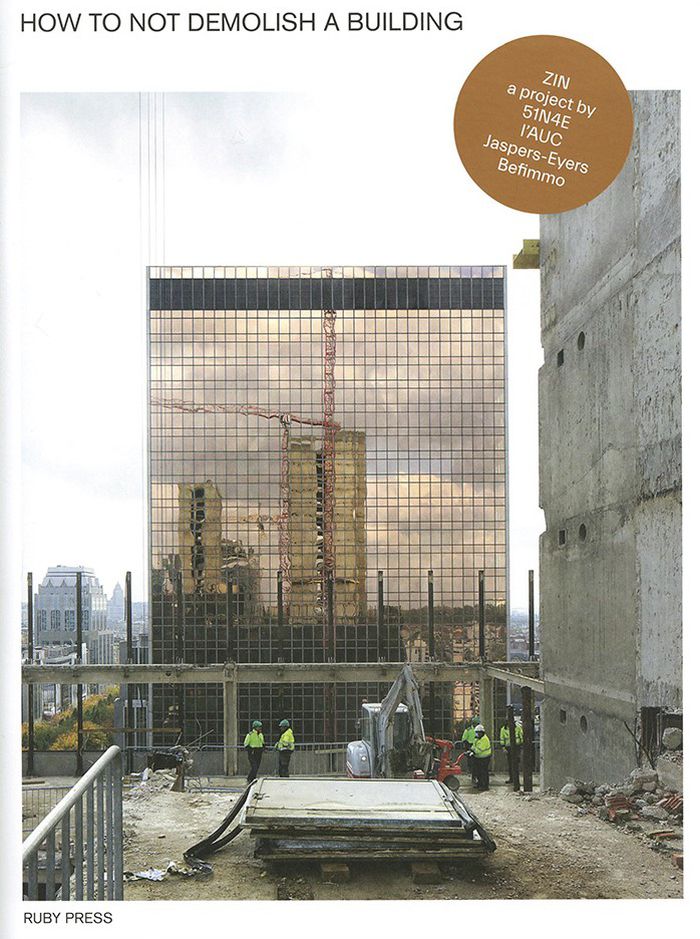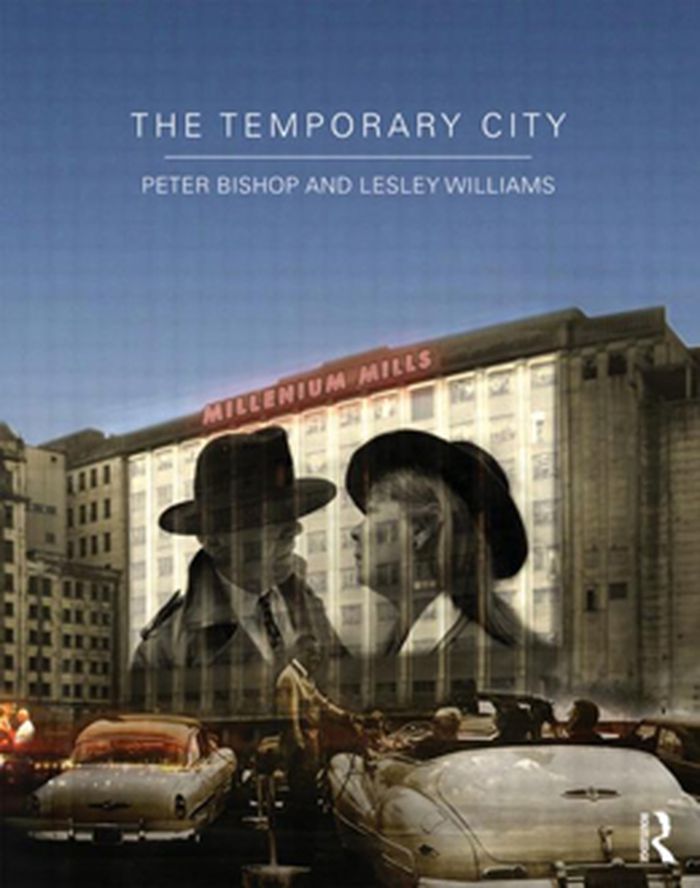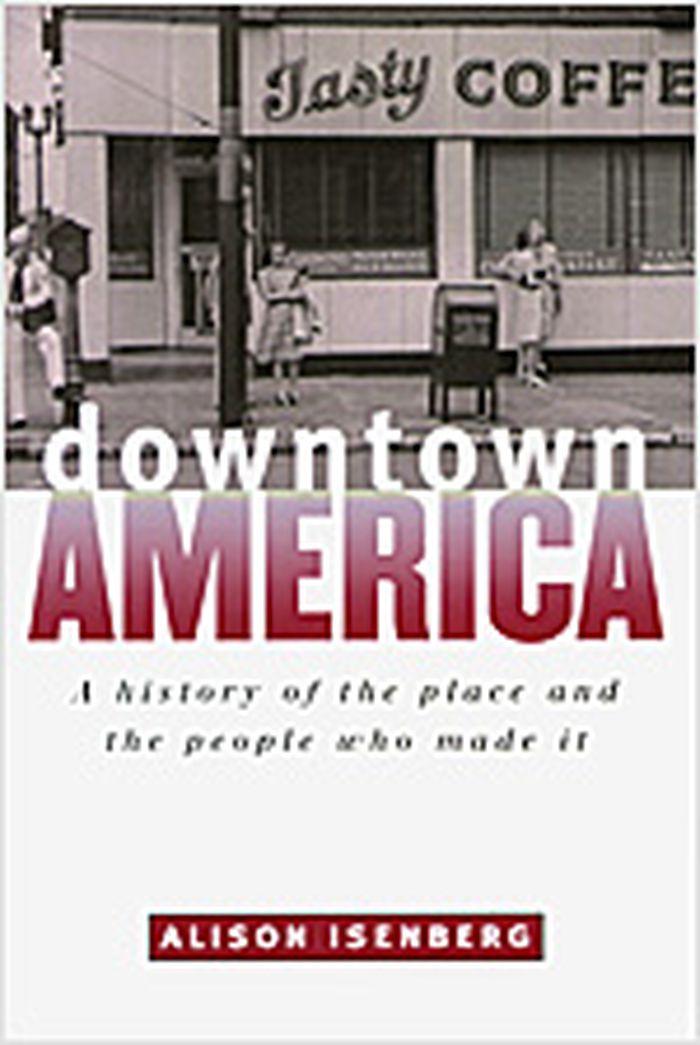books
Description:
xiii, 459 pages : illustrations (some color), maps (some color) ; 29 cm
Boston : Pearson, ©2012.
Urbanization : an introduction to urban geography / Paul L. Knox, Linda McCarthy.
Actions:
Holdings:
Description:
xiii, 459 pages : illustrations (some color), maps (some color) ; 29 cm
books
Boston : Pearson, ©2012.
books
Description:
478 pages : illustrations, maps ; 23 cm
New York : Monacelli Press, 1998.
Slow space / edited by Michael Bell and Sze Tsung Leong.
Actions:
Holdings:
Description:
478 pages : illustrations, maps ; 23 cm
books
New York : Monacelli Press, 1998.
books
Description:
x, 397 pages : illustrations ; 24 cm
Cambridge, Mass. : MIT Press, ©1999.
Suspensions of perception : attention, spectacle, and modern culture / Jonathan Crary.
Actions:
Holdings:
Description:
x, 397 pages : illustrations ; 24 cm
books
Cambridge, Mass. : MIT Press, ©1999.
Vacant Spaces NY
$80.00
(available to order)
Summary:
This project began by walking around our neighborhood noticing empty storefronts. Once we saw them, they were everywhere. They followed us, appearing quietly throughout New York City. Many with no signage, no “for rent,” no “coming soon.” Usually empty, sometimes dusty, sometimes with brown paper covering the glass. Now, vacancy has only increased. In the densest city in(...)
Architecture Monographs
October 2021
Vacant Spaces NY
Actions:
Price:
$80.00
(available to order)
Summary:
This project began by walking around our neighborhood noticing empty storefronts. Once we saw them, they were everywhere. They followed us, appearing quietly throughout New York City. Many with no signage, no “for rent,” no “coming soon.” Usually empty, sometimes dusty, sometimes with brown paper covering the glass. Now, vacancy has only increased. In the densest city in the United States. During a housing crisis. Throughout a pandemic. The quantity of vacant spaces is anyone’s best guess. It’s only partially documented. They hide in plain sight. This volume is organized from large to small, general to specific. It begins by looking at vacancy within the United States and continues down to each Manhattan neighborhood, where we zoom into specific vacant spaces, where we have provided as case studies that imagine some possibilities for transforming current vacant spaces into housing or social services. There is also a section on Covid 19, which infiltrated New York during our research. As a whole, this document is not meant to provide specific solutions. The data is incomplete. Case studies are limited. We are not policy experts or data analysts or urban planners. Instead, it is simply meant to show something we have taken for granted, vacant spaces, taking part in a collective process of imagining a better city.
Architecture Monographs
$66.00
(available in store)
Summary:
Part of the Chapters series developed by the Belgian architects 51N4E, this third instalment tells the story of two office towers from the 1970s that have been transformed according to the principles of reduce/reuse/recycle. Against all odds, the former World Trade Centre in Brussels is being repurposed in a previously unimaginable way. After many years of vacancy, the(...)
How to not demolish a building
Actions:
Price:
$66.00
(available in store)
Summary:
Part of the Chapters series developed by the Belgian architects 51N4E, this third instalment tells the story of two office towers from the 1970s that have been transformed according to the principles of reduce/reuse/recycle. Against all odds, the former World Trade Centre in Brussels is being repurposed in a previously unimaginable way. After many years of vacancy, the building now represents a new approach to urban development and a showcase for dealing in a more sustainable way with older buildings threatened with demolition. And although the adaptive reuse of this building is unique, the underlying concepts and processes are not – a lesson on how not to demolish a building.
Architecture Monographs
The temporary city
$51.95
(available to order)
Summary:
Most of the professional training, thinking and strategies of architects, urban designers and planners, are strictly three-dimensional. In reality of course the city is four dimensional, and one needs to acknowledge the influence of time in planning and design strategies. Similarly, there has been relatively little analysis of the importance of interim, short-term or(...)
The temporary city
Actions:
Price:
$51.95
(available to order)
Summary:
Most of the professional training, thinking and strategies of architects, urban designers and planners, are strictly three-dimensional. In reality of course the city is four dimensional, and one needs to acknowledge the influence of time in planning and design strategies. Similarly, there has been relatively little analysis of the importance of interim, short-term or meanwhile activities in urban areas. In an era of increasing pressure on scarce resources, we cannot wait for long-term solutions to vacancy or dereliction. Instead, we need to view temporary uses as increasingly legitimate and important in their own right. They can be a powerful tool through which we can drip-feed initiatives for incremental change as and when we have the resources while being guided by a loose-fit vision.
Urban Theory
Grain elevators
$93.95
(available in store)
Summary:
Bernd and Hilla Becher's almost fifty-year collaboration constitutes one important project in objective and conceptual photography today. With this volume, grain elevators join the list of building types documented by the Bechers in their book-length studies: water towers, blast furnaces, gas tanks, oil tanks, mineheads, frame houses, and cooling towers. Grain(...)
Photography monographs
November 2006, Cambridge (MA), London
Grain elevators
Actions:
Price:
$93.95
(available in store)
Summary:
Bernd and Hilla Becher's almost fifty-year collaboration constitutes one important project in objective and conceptual photography today. With this volume, grain elevators join the list of building types documented by the Bechers in their book-length studies: water towers, blast furnaces, gas tanks, oil tanks, mineheads, frame houses, and cooling towers. Grain elevators are towering structures in the flat, vast landscape of the world's granaries. Providing a fast and efficient method of loading and unloading grain to keep pace with the industrial production methods of the nineteenth century, they made possible a tremendous increase in the trafficking and processing of grain. Scooping, pouring, and spitting, they both illustrated and inspired Le Corbusier's idea of buildings as functioning machines. Monumental, essential, and visually arresting, grain elevators belong as much to the American imagination and landscape as to the European. The photographs of grain elevators in this volume were taken in Germany, Belgium, France, and America. But the specificity of time and place is erased in these photographs; the monolithic structures evoke the agricultural prosperity of a vanished era and the vacancy that replaces it today.
Photography monographs
$28.50
(available to order)
Summary:
"Downtown America" was once the vibrant urban center romanticized in the Petula Clark song-a place where the lights were brighter, where people went to spend their money and forget their worries. But in the second half of the twentieth century, "downtown" became a shadow of its former self, succumbing to economic competition and commercial decline. And the death of Main(...)
Downtown America : a history of the place and the people who made it
Actions:
Price:
$28.50
(available to order)
Summary:
"Downtown America" was once the vibrant urban center romanticized in the Petula Clark song-a place where the lights were brighter, where people went to spend their money and forget their worries. But in the second half of the twentieth century, "downtown" became a shadow of its former self, succumbing to economic competition and commercial decline. And the death of Main Streets across the country came to be seen as sadly inexorable, like the passing of an aged loved one. "Downtown America" cuts beneath the archetypal story of downtown's rise and fall and offers a new story of urban development in the United States. Moving beyond conventional narratives, Alison Isenberg shows that downtown's trajectory was not dictated by inevitable free market forces or natural life-and-death cycles. Instead, it was the product of human actors-the contested creation of retailers, developers, government leaders, architects, and planners, as well as political activists, consumers, civic clubs, real estate appraisers, even postcard artists. Throughout the twentieth century, conflicts over downtown's mundane conditions-what it should look like and who should walk its streets-pointed to fundamental disagreements over American values. Isenberg reveals how the innovative efforts of these participants infused Main Street with its resonant symbolism, while still accounting for pervasive uncertainty and fears of decline. Readers of this work will find anything but a story of inevitability. Even some of the downtown's darkest moments-the Great Depression's collapse in land values, the rioting and looting of the 1960s, or abandonment and vacancy during the 1970s-illuminate how core cultural values have animated and intertwined with economic investment to reinvent the physical form and social experiences of urban commerce. "Downtown America"-its empty stores, revitalized marketplaces, and romanticized past-will never look quite the same again.
Urban Theory




